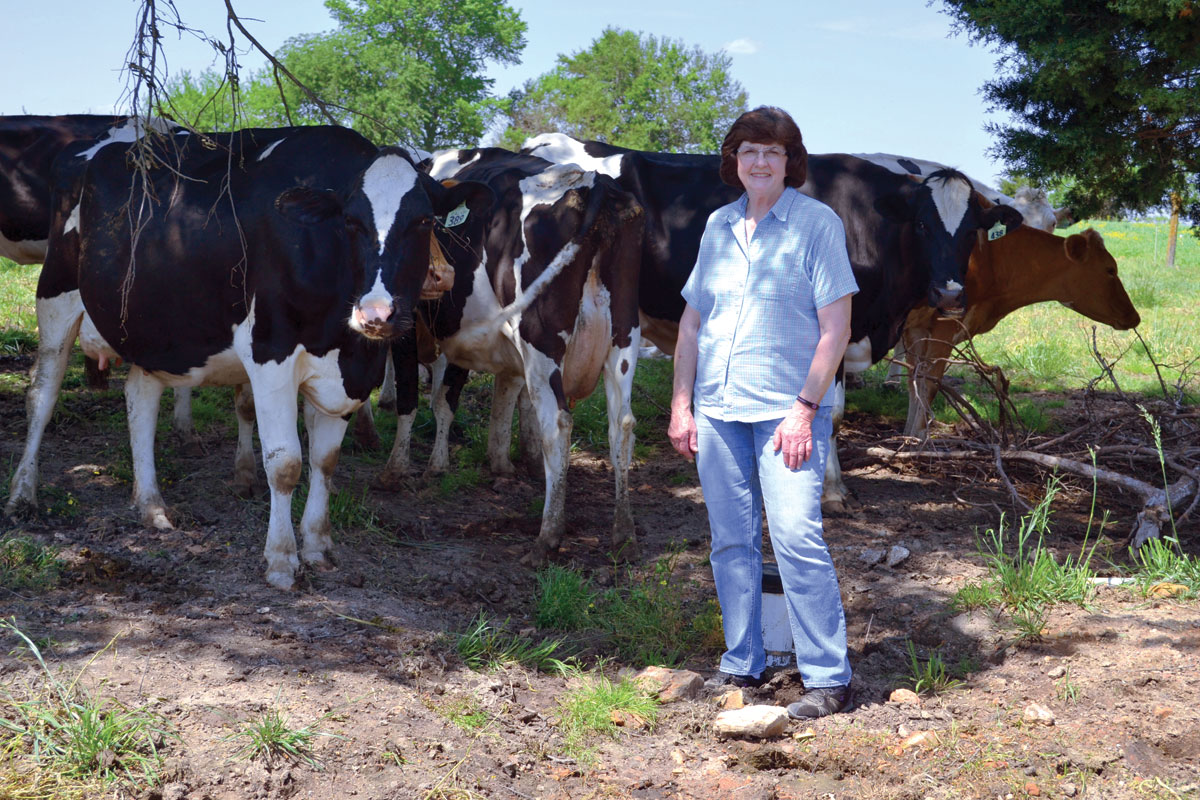
Mark Gronniger grew up in Dallas County but went into farming with a plan, as he put it, while he was still serving with the Marines. Kim, originally a city girl from Iowa, stated she met her husband while living on an Iowa farm, when he was working as a Marine recruiter there. “He recruited me, too,” she laughed. Afterwards, Mark and Kim came home to Dallas County where they raised four children on their 420 acres, outside Long Lane, Mo. Today, all but one has left home. Mark and Kim are raising 110 momma cows, calves and Red Angus bulls.
When asked why Red Angus, Mark smiled. “I’ve got a red-headed wife and that’s worked out well. I’ve got red chickens and a red collie named Angus and they’ve worked out well, too, so why not red cows?”
Kim added, “They are very gentle mommas and everybody else seems to have Black Angus so we wanted something a little different. And we’ve been really happy with them.”
“When I started out, I had $10 in my pocket,” Mark said. “I saved every dime, even going through the trash on base, salvaging the aluminum cans from the drunks on Friday and Saturday nights. I used to make $90 a weekend from that,” he laughed, “but it worked. I paid for my first acreage before I left the service.
“I started using Red Angus bulls about 10 years ago. We raise our own replacement heifers. I got some excellent advice years ago from a Red Angus breeder when I asked. He said, ‘if you want to know what you are getting in a bull, ask to see its momma. His mother is what you are going to get in your heifers. If you can’t see the momma, go elsewhere.’ That’s about as true as you can get,” Mark continued.
“And we got an excellent bull from him as well,” Kim added.
“We’ve probably had about 60 cows out of that one bull,” he added. “In this business, you need to find what works best with the cows you have. I have registered and mixed breed cattle and there are advantages to both. There’s a lot to be done when operating a seedstock operation. The research done by registered breeders is important to all of us. Each breed has its own advantages. On the other hand, I feel the mixed breed cattle grow a little better and are a little hardier. I think there are as many differences within a breed as there are differences across the breeds.
“For instance, the Red Angus cows we have are some of the most fertile I’ve ever seen. One more reason you want to keep your best cows, you don’t have to replace them as often. We got five sets of twins this year. And most of those cows will let me pick up their new born calves,” Mark added with just a touch of pride, as to the gentle, trusting nature of his cows.
Mark and Kim have devoted a lifetime to their farming operation and hope that one day, one of their four children – daughters Brandi, Katie and Megan or son, Jacob might return to live and work on the farm next door, that now belongs to the Gronnigers as well. Brandi and her husband are currently operating a family quail farm, also in Dallas County. Katie is a past president of FFA and is currently a student at MSU, Jacob works in Branson and Megan is a senior at Buffalo High School.







